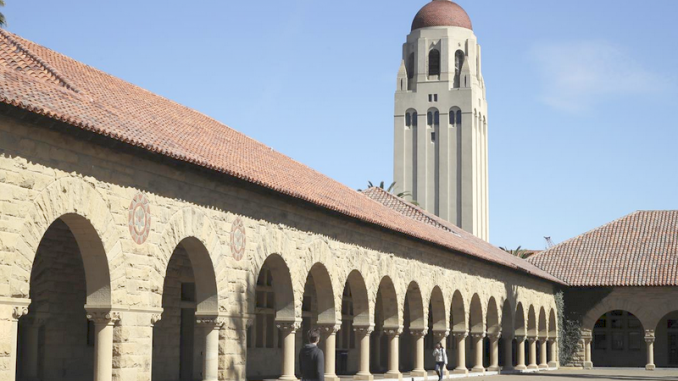
This story originally appeared in the Sept. 26 print edition of the Daily Post. To get all the local news, including many stories you can’t find online, pick up the Post every morning at 1,000 Mid-Peninsula locations.
BY SARA TABIN
Daily Post Staff Writer
Santa Clara County Supervisor Joe Simitian says he believes his board has the ability to require Stanford to fund the Palo Alto Unified School District if the university’s 3.5 million expansion proposal is approved.
Simitian, in an interview with the Post, says he’s been told by residents that state law stops the county from requiring funding. But Simitian pointed out that the law only applies to school facilities, not day-to-day operating budgets.
Simitian says that when the county board votes on the Stanford plan, which could come as early as next month, it will have to make a “finding of facts” about the development. For example, the board must find that the development won’t worsen traffic congestion or that it will control erosion.
One of the findings of facts says, “The proposed use will not be detrimental to the public health, safety or general welfare.”
Simitian says that if the university, whose academic buildings and housing are exempt from property taxes, sends students into the Palo Alto district without funding, that would be detrimental to the general welfare of the remaining children in the district. That’s because the district, with a limited budget, would have to reduce spending per pupil overall in order to educate the incoming students of new Stanford employees if the university doesn’t contribute any money.
By one estimate, the expansion will add 1,500 new students to the Palo Alto schools.
Currently, it costs the district $20,927 to educate each student, given the district’s budget of $255 million and enrollment of 12,200 pupils.
An additional 1,500 students would cost the district $31.3 million a year.
Yet Stanford wouldn’t pay any property taxes for those students since academic buildings and academic housing are exempt from property taxes.
Schools lose out on $44.5 million
The county estimates that if the tax exemption didn’t exist, the school district would be getting an additional $44.5 million a year in property taxes from Stanford.
Additional students without more funding will mean that there is less money for all the kids in the district, says Simitian. That means, for example, less funding for counselors for children with mental health issues, less money for tutors for children who are behind in reading and less money for services to help students apply for college, he said.
Simitian said a decrease in per pupil funding would be detrimental to the public welfare, referring to the “finding of facts” the supervisors must make.
“If you want us to make that finding, don’t you need to step up for the schools?” he asked.
Stanford’s attempted side deal with PAUSD
While negotiating with the county, Stanford struck a tentative side deal with the Palo Alto Unified School District in April to provide some funding for the new students that will join the district if the university gets its expansion. The university would give the district $138 million over the life of the GUP, or 30 cents for each dollar it costs to educate a student.
But the side deal was contingent on Stanford getting a development agreement from the county, though the county had not reached a deal for a development agreement.
The normal process is for a development to receive an approval with conditions from the county. Another process for approval is for the developer and a local government to negotiate a development agreement, which is typically done behind closed doors and includes tradeoffs. It also gives the developer more flexibility.
In a letter to Superintendent Don Austin on Sept. 23, Stanford Vice President Bob Reidy said the school district will get the $138 million if the county approves the expansion permit and a development agreement.
The school board declined to approve the side deal in April.
Kids as a bargaining chip
If the school board had approved the deal, it would have allowed Stanford to say to the county that if it didn’t get its way in the development agreement negotiations, it would drop the funding deal with the school district.
Simitian said he was “disappointed at the attempt to use the school kids in Palo Alto as a bargaining chip” to get a development agreement from the county.
Upcoming meetings
The Santa Clara County Board of Supervisors has several meetings scheduled to discuss Stanford’s 2018 General Use Permit:
• Oct. 8 at 1:30 p.m. at the County Government Center in San Jose,
• Oct. 22 at 6 p.m. at the Palo Alto City Council Chambers; and
• Nov. 5 at 1:30 p.m. at the County Government Center.

Stanford has said that they’re walking away from the permit if the county doesn’t give them exactly what they want. I encourage Simitian to accept that position and end this process. Let’s let Stanford remain the way it is. They don’t get to run roughshod over the community.